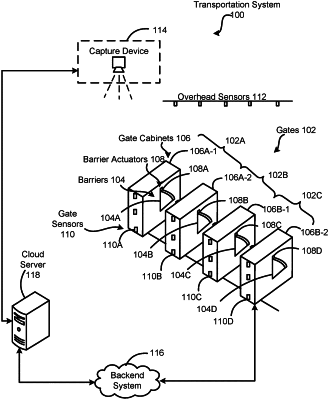| CPC G07C 9/10 (2020.01) [G01S 13/89 (2013.01); G06N 20/00 (2019.01); G06Q 50/30 (2013.01)] | 20 Claims |

|
1. A transportation system for identifying an object using a short range radar at a transportation gate, the transportation system comprising:
the short range radar is configured to:
determine the object within a predetermined distance from the transportation gate, and
sense the object at the transportation gate to generate a point cloud, wherein the object includes one or more items associated with each other; and
a cloud server comprising a machine learning library, wherein the machine learning library comprises a plurality of machine learning algorithms, the cloud server is configured to:
determine an identification of the object based on sensed data of the object using a first machine learning algorithm, wherein:
the identification is determined based on matching the point cloud with a plurality of profiles;
the plurality of profiles includes matching information for a plurality of predetermined objects; and
the object is selected from the plurality of predetermined objects using the matching information,
determine an authorization for the object to pass through the transportation gate using a second machine learning algorithm, wherein a subset of the plurality of predetermined objects are authorized, and
in response to determination of the authorization, either authorize a passage through the transportation gate or flag the object as being unauthorized.
|